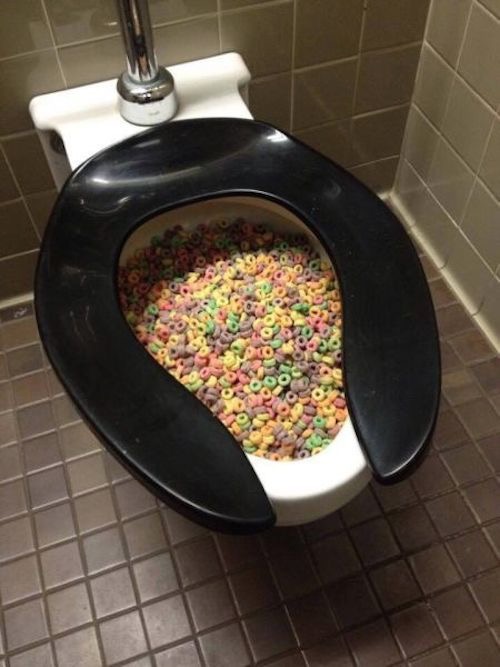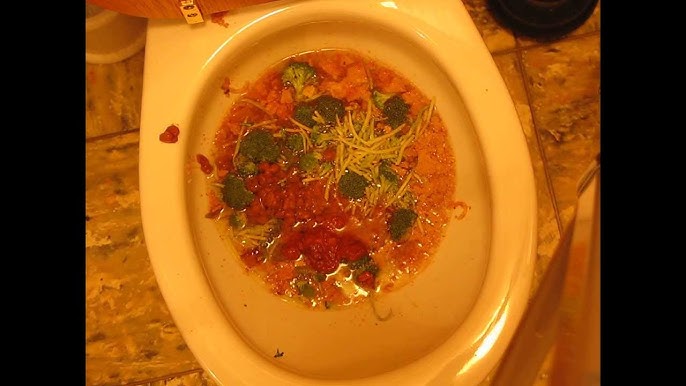Were you on the lookout for answers about Think Twice Before Flushing Food Down Your Toilet?

Intro
Lots of people are frequently confronted with the issue of what to do with food waste, especially when it concerns leftovers or scraps. One usual question that emerges is whether it's fine to flush food down the commode. In this write-up, we'll look into the reasons that individuals might think about purging food, the consequences of doing so, and alternative methods for appropriate disposal.
Reasons people might consider flushing food
Absence of awareness
Some individuals may not be aware of the possible damage triggered by flushing food down the toilet. They may mistakenly believe that it's a harmless practice.
Benefit
Flushing food down the bathroom may look like a fast and easy option to throwing away unwanted scraps, particularly when there's no neighboring garbage can available.
Idleness
In some cases, people might just pick to flush food out of sheer idleness, without thinking about the consequences of their actions.
Effects of flushing food down the bathroom
Environmental influence
Food waste that winds up in waterways can add to pollution and injury water environments. Additionally, the water made use of to purge food can strain water sources.
Plumbing problems
Flushing food can cause clogged pipes and drains pipes, causing expensive pipes repair services and inconveniences.
Kinds of food that need to not be flushed
Fibrous foods
Foods with coarse appearances such as celery or corn husks can get entangled in pipes and create obstructions.
Starchy foods
Starchy foods like pasta and rice can take in water and swell, causing obstructions in pipelines.
Oils and fats
Greasy foods like bacon or food preparation oils must never ever be flushed down the toilet as they can solidify and cause blockages.
Correct disposal methods for food waste
Utilizing a waste disposal unit
For homes equipped with waste disposal unit, food scraps can be ground up and purged via the pipes system. However, not all foods are suitable for disposal in this way.
Recycling
Specific food product packaging products can be reused, reducing waste and reducing environmental effect.
Composting
Composting is a green means to dispose of food waste. Organic products can be composted and utilized to enhance dirt for gardening.
The importance of proper waste management
Lowering ecological damage
Appropriate waste management techniques, such as composting and recycling, assistance reduce pollution and preserve natural deposits for future generations.
Securing plumbing systems
By staying clear of the practice of flushing food down the commode, house owners can avoid pricey plumbing fixings and preserve the honesty of their plumbing systems.
Final thought
To conclude, while it might be tempting to flush food down the commode for convenience, it is very important to understand the potential repercussions of this action. By adopting proper waste monitoring techniques and taking care of food waste sensibly, individuals can add to healthier plumbing systems and a cleaner setting for all.
FLUSH FOOD DOWN THE TOILET?
FLUSHING FOOD CAN CAUSE BLOCKED DRAINS IN YOUR HOME
All of the plumbing fixtures in your home are connected to the same sewer pipe outside of your home. This outdoor sewer pipe is responsible for transporting all the wastewater from your home to the Council sewer mains. Even small pieces of food that go down the kitchen sink can cause problems for your sewer. It should therefore be obvious that flushing larger bits of food, such as meat, risks a clog in either the toilet itself or the sewer pipes. Flushing greasy food is even more problematic because oil coagulates when it cools, coating the interior lining of your pipes.
THE TOILET IS NOT A BIN
Food isn’t the only thing that people shouldn’t be flushing down the toilet. People use the toilet to dispose of all kinds of things such as tampons, makeup wipes, dental floss, kitty litter and even underwear. Water goes to great lengths to educate residents about the high costs and stress placed on wastewater treatment systems simply from people flushing the wrong stuff down the toilet. It costs taxpayers millions of dollars each year, and homeowners thousands in blocked drain repairs.
FLUSHING FOOD IS A WASTE OF WATER
Flushing food is a waste of our most precious resource - water. In June this year Level 1 water restrictions were introduced to protect water supply from drought conditions. Much of New South Wales continues to be affected by prolonged drought with recent figures revealing up to 97 per cent of the state remains in drought. Depending on whether you have a single or dual flush toilet, every single flush uses between five and 11 litres of water. In the current climate this is a huge amount of water to be wasting on flushing food that should be placed in the bin (or better yet, the compost).
https://www.jabplumbingsolutions.com.au/blog/can-you-flush-food-down-the-toilet

I hope you liked our topic about What Can Happen If You Flush Food Down the Toilet?. Thank you so much for taking time to read our content. Liked our entry? Please share it. Let others discover it. I appreciate reading our article about Flushing Food Down the Toilet?.
Visit My Web Page